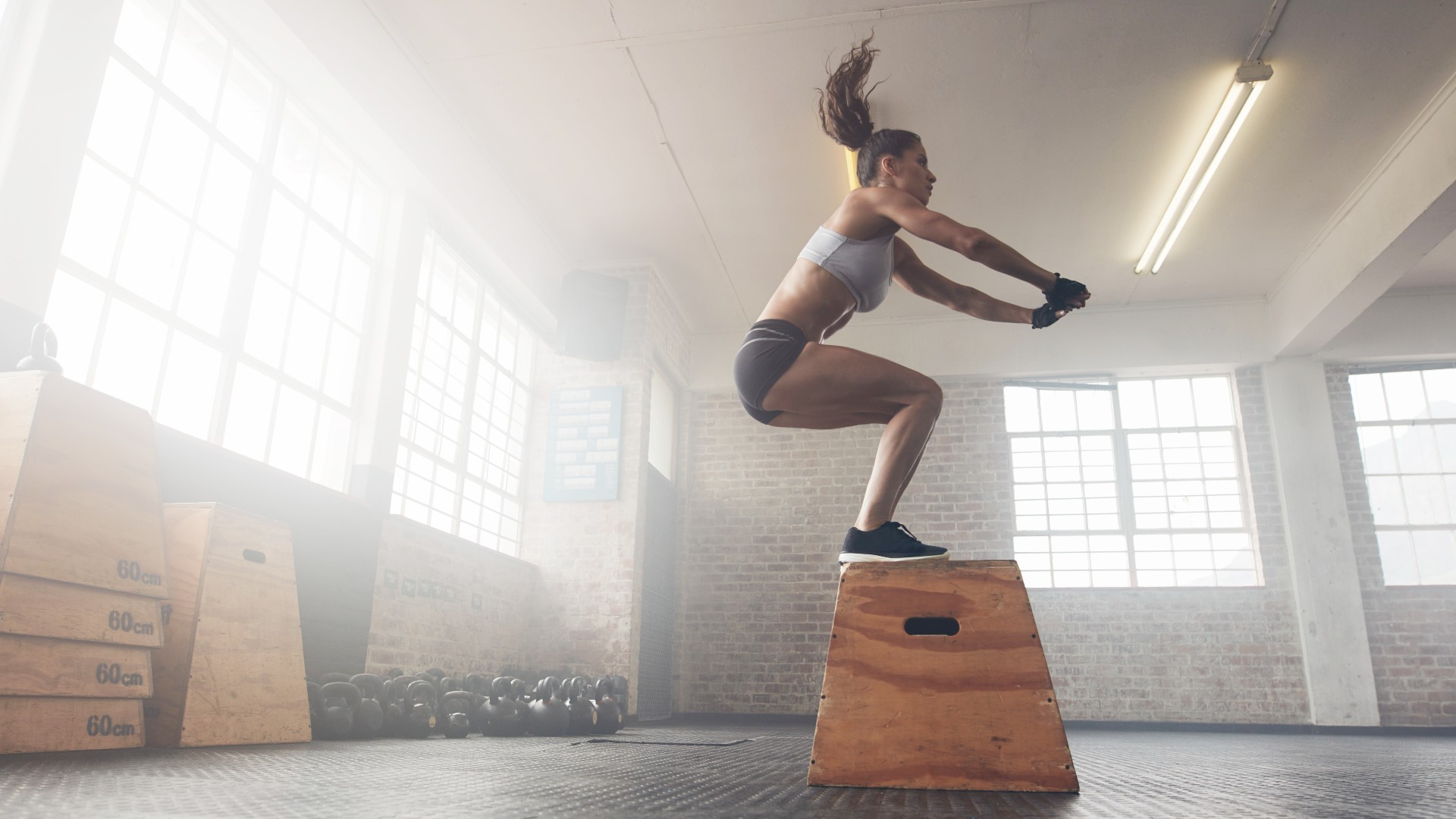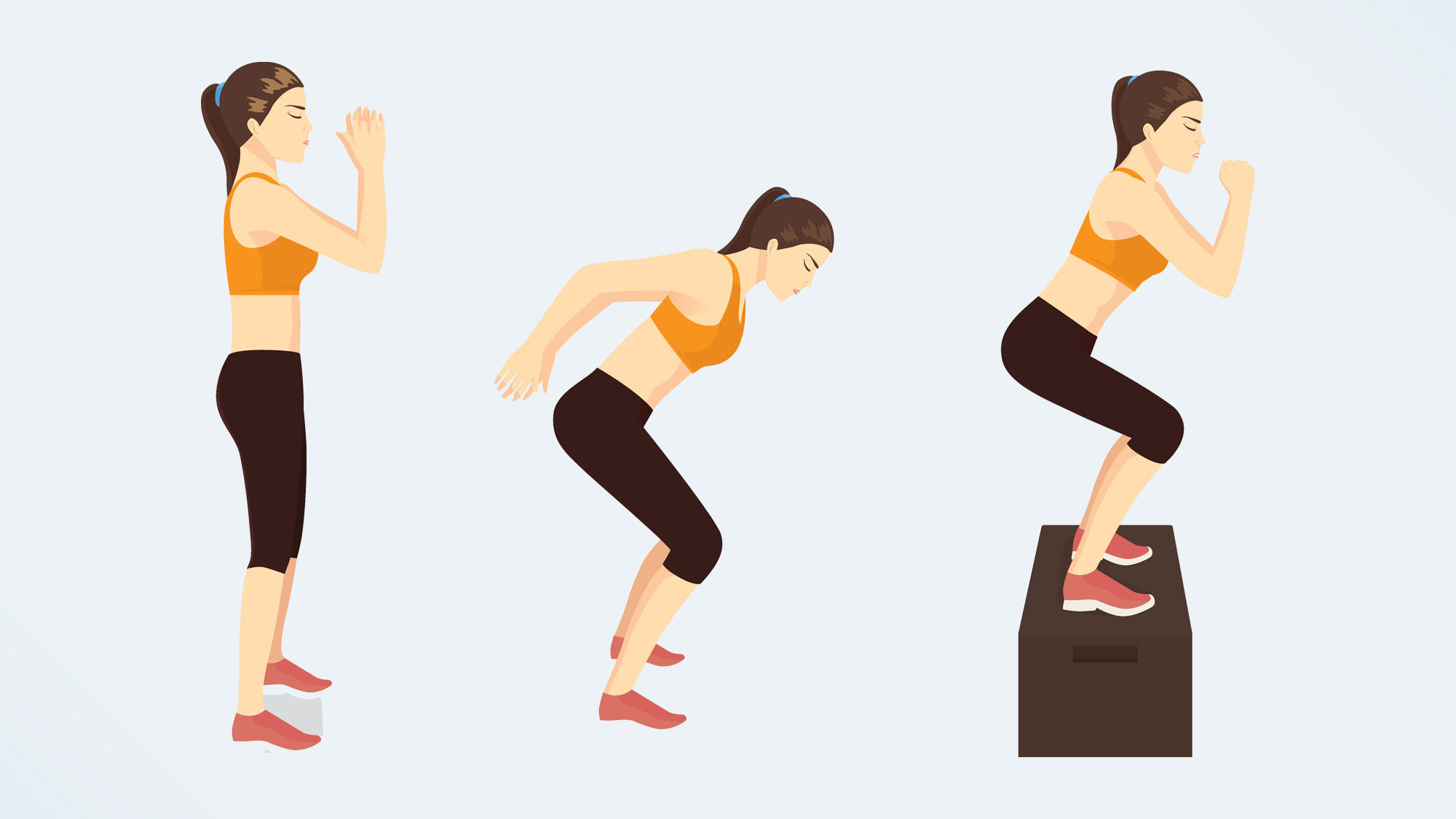
The only thing standing between you and a full-body burner is 300 reps, so whether you want to test your stamina, power, and strength or build lean muscle, this should be a regular go-to.
The WOD (workout of the day) is a calorie crusher designed to give you a metabolic supercharge and help you burn calories for hours after you’ve finished sweating — and swearing. The testing 300-rep bodyweight workout should send you into your fat-burning zone, which occurs when working somewhere close to 70 percent of your maximum heart rate. If you like to crunch reps and numbers, you can measure your heart rate zones using the best fitness trackers to follow your workout stats.
The 300-rep bodyweight workout consists of only three exercises, but don’t let that fool you. You’ll perform each exercise for a spicy 100 reps, finishing one before moving to the next. Aim to work at a consistent pace without burning out early, and keep a close eye on your finish time for future attempts.
You can repeat this every few weeks as a test of strength and endurance, or just try it as a one-off. However you use it, the bodyweight workout hits every major muscle group using high-volume reps at a medium to high intensity to help build muscular endurance, crush calories, and improve overall strength. And Thor himself is doing it too — check out Chris Hemsworth’s 200-rep bodyweight workout for next time.
This 300-rep bodyweight workout is a full-body burner
I teach bodyweight classes that focus on strengthening muscles all over the body using just the load of your body weight. Simple push-pull exercises can work your shoulders, chest, back, legs, and core muscles to fatigue without needing kettlebells, resistance bands, or the best adjustable dumbbells — although I love to work with free weights, too.
The benefits of bodyweight training like calisthenics are well documented. It can improve your functional performance and help you incorporate cardio and strength training into your exercise routine. Completing 300 reps is also a quick and measurable way to kick up a daytime sweat, although maybe book a meeting room if you plan to sneak it into the office at lunch.
And don’t worry if it doesn’t take you long to finish. Research shows that even 15 to 20-minute workouts could pack benefits like better heart health in exercisers.
Get instant access to breaking news, the hottest reviews, great deals and helpful tips.
The 300-rep bodyweight workout
Test your strength, power, and endurance with the 300-rep bodyweight workout.
100 box jump burpees
100 push-ups
100 pull-ups
1. Box jump burpees (100 reps)


How to do a box jump burpee
You can opt for a straight-arm burpee or chest-to-floor burpee — here’s how to do a burpee with proper form. For beginners, remove the burpee and focus on explosive power instead. You could also replace this exercise with 100 air squats if you don’t have a box.
How:
- Stand in front of a box, bench, or another stable surface you can jump onto with feet hip-width apart
- Brace your core and begin to lower into a squat position, then explosively jump onto your box, landing with both feet flat and knees bent
- Stand up, then step or jump back down and perform a burpee in front of your box.
2. Push-ups (100 reps)

Keep your core braced and elbows close to your ribs throughout the movement. Place your knees on the floor for extra support if this feels more comfortable.
How:
- Start in a push-up position with shoulders over wrists (see above)
- Brace your core, then bend your elbows and lower your chest toward the floor
- Pause, then explosively push the ground away back to the starting position
3. Pull-ups (100 reps)

Try not to swing or jump into the pull-up. For beginners, loop a resistance band around the bar and step one foot through for extra support. Not available? Replace with a bent-over row using any weights you have handy and focus on squeezing your back muscles. We cover the pull-up vs chin-up debate in detail and a dumbbell row example here.
How:
- Stand underneath a bar or similar and grip with both hands, ensuring you wrap your thumbs around
- Contract your body including your lats, core, and quads, and set your shoulders back and down
- Hang from the bar, softly shrug your shoulders, then pull your body weight up until your chin reaches over the bar
- Lower down with control for one rep.
This workout dips its toes into met-con training (metabolic conditioning) to improve strength via pull-ups and push-ups, build power and aerobic fitness from box jump burpees, and increase endurance using high repetitions to test the exerciser to continuously produce the move. Met-con workouts can therefore improve two things: How your body uses energy, and sports performance by using a workout that moves between high and lower intensity.
Although this workout is designed to push (and pull) your entire body with very little rest, “typical” met-con workouts usually involve more high-intensity exercises like calorie machines and plyometrics (think jump lunges) alongside strength and core work (think a CrossFit WOD, for example), but you’ve got everything you need here — squats, burpees, compound strength movements, and a push-pull combo. Hit save and get it done!
Next: Our fitness editor did 100 plank jacks every day for a week, here's what happened. And one writer tried diamond push-ups every day for a week to torch their triceps.

Sam Hopes is a level 3 qualified trainer, a level 2 Reiki practitioner and fitness editor at Tom's Guide. She is also currently undertaking her Yoga For Athletes training course.
Sam has written for various fitness brands and websites over the years and has experience across brands at Future, such as Live Science, Fit&Well, Coach, and T3.
Having coached at fitness studios like F45 and Virgin Active and personal trained, Sam now primarily teaches outdoor bootcamps, bodyweight, calisthenics and kettlebells.
She also coaches mobility and flexibility classes several times a week and believes that true strength comes from a holistic approach to training your body.
Sam has completed two mixed doubles Hyrox competitions in London and the Netherlands and finished her first doubles attempt in 1:11.
